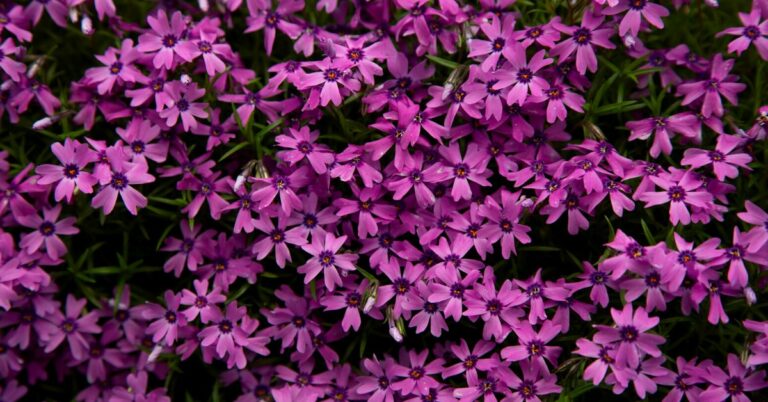How to Grow Ixia Flowers: A Gardening Guide
Ixia flowers, known for their striking star-shaped blossoms and vibrant colors, are a delightful addition to any garden. These small but mighty flowers are relatively easy to grow, making them a popular choice for gardening enthusiasts looking to add a touch of exotic beauty to their landscape. In this comprehensive gardening guide, we’ll walk you through everything you need to know to successfully grow ixia flowers in your own garden.
Understanding Ixia Flowers

Before we dig into the nitty-gritty of planting and caring for ixia flowers, it’s important to understand the flower’s unique appeal. Native to South Africa, ixia, also known as the African Corn Lily, is a member of the iris family. What makes ixia flowers truly special is their ability to produce clusters of vibrant blossoms on slender stalks that sway gracefully in the breeze. This characteristic, combined with their range of colors from soft pastels to rich, deep hues, offers a feast for the eyes and a perfect contrast to the more common garden blooms.
Ixia flowers have cultural significance, being used in native ceremonies and admired for their natural beauty. In the garden, they are especially attractive when planted together in groups, and their versatile growth habits make them suitable for both borders and beds. These flowers are also cherished for their cut flower potential, bringing their unique beauty indoors for enjoyment.
Choosing the Right Location for Ixia
The key to growing robust ixia flowers is selecting the right location. Ixia flowers thrive in full sun, needing at least 6 to 8 hours of direct sunlight each day. When choosing a spot in your garden, keep in mind that ixias prefer well-drained, sandy or loamy soil. It’s essential that the location offer good air circulation, as overly damp conditions can lead to bulb rot.
Consider the climate of your region as well. Ixia flowers prefer a Mediterranean climate, where mild winters and dry summers prevail. If you live in a cooler climate, you can still grow ixias, but you may need to take extra measures to protect them from frost.
Planting Ixia Bulbs
Planting ixia bulbs is a crucial step in their growth cycle. Here’s what you need to know:
Timing and Depth
In warmer climates, ixia bulbs are best planted in autumn, allowing them to establish roots before their spring bloom. In cooler climates, you can plant ixia bulbs in the spring for blooming in the summer or autumn.
The depth at which you should plant your ixia bulbs will depend on their size, but as a general rule, plant them at a depth that is three times the width of the bulb. This will typically be around 2 to 4 inches deep.
Spacing Guidelines
Ixia bulbs should be planted approximately 3 to 4 inches apart. This will give them enough space to grow without overcrowding each other, which can lead to competition for nutrients and decreased flower production.
Prepare your soil ahead of time by loosening it with a garden fork or trowel to a depth of at least 12 inches. Mix in some well-aged compost or organic matter to improve soil structure and fertility. This will provide a good foundation for the growing bulbs and help them establish strong root systems.
Caring for Ixia Flowers
With the proper care, ixia flowers will reward you with their beautiful blooms year after year. Here’s how to ensure they thrive:
Watering Needs
After planting, water ixia bulbs thoroughly to settle the soil and begin the growing process. During the growing season, ixia flowers prefer consistently moist soil but are very sensitive to overwatering, which can lead to rot. A general rule of thumb is to water thoroughly when the top inch of soil is dry to the touch.
Consider using a drip irrigation system to ensure that your ixias receive the correct amount of water directly at the root zone. This method is ideal as it keeps the foliage dry, which helps prevent diseases.
Fertilization Tips
Ixia flowers benefit from a balanced, all-purpose fertilizer when they are actively growing and blooming. Apply the fertilizer according to the manufacturer’s instructions, usually around the time of planting or when the first shoots appear in late winter or early spring.
Avoid fertilizing the bulbs after they have bloomed, as this is their resting period. Over-fertilizing at this time can lead to lush growth that is more susceptible to disease.
Pest and Disease Management
While ixia flowers are relatively pest and disease-resistant, they can still fall victim to some common garden woes. Keep an eye out for signs of insect damage or fungal diseases such as botrytis, which can occur in overly wet conditions. Treat any issues promptly with organic or chemical controls as needed.
To prevent problems, ensure proper spacing and air circulation when planting, and avoid overwatering. Regularly inspect your ixia flowers for signs of pests or diseases, so you can act quickly if there’s an issue.
Blooming and Maintenance
As your ixia flowers grow, they will go through various stages of development. Learn to recognize when they’re about to bloom so you can take appropriate steps to ensure a spectacular flower show.
Monitoring Growth Stages
Ixia flowers usually bloom about 8 weeks after planting. Keep an eye on your garden and watch for the first signs of flower buds. This is an exciting time, and you’ll want to be vigilant about caring for your plants to maximize their beauty and health.
Deadheading and Pruning
After the flowers have faded, deadhead them by removing the flower stalk at its base. This not only improves the appearance of the plant but also redirects energy back into the bulb, encouraging future blooms.
Occasionally, you may need to prune back the foliage as it starts to die back. This is normal and helps the plant transition back into its dormant phase. Avoid cutting it back too early, as the leaves are still providing energy to the bulb.
Supporting Tall Varieties
If you’ve chosen a particularly tall variety of ixia, the flower stalks may need some support to prevent them from flopping over. Bamboo stakes or other rod-like structures can be placed near the plants and used to tie the ixia stems upright.
This is especially important if your garden is in a windy location, as ixia flowers can be quite delicate and prone to damage in strong winds.
Conclusion
By following this gardening guide, you are well on your way to cultivating a thriving ixia garden. Remember, the most important thing is to provide your flowers with love, care, and attention. Your dedication will be rewarded with a stunning display of ixia flowers, each as unique and beautiful as the last.
Whether you are a seasoned gardener or just starting to cultivate your green thumb, growing ixia flowers is a joyful experience that connects you to the vibrant world of nature. And as your ixias burst into color, take a moment to appreciate the magic you’ve created in your own backyard, and perhaps even cut a few blooms to bring the outside in and brighten your interior spaces. Happy planting!






